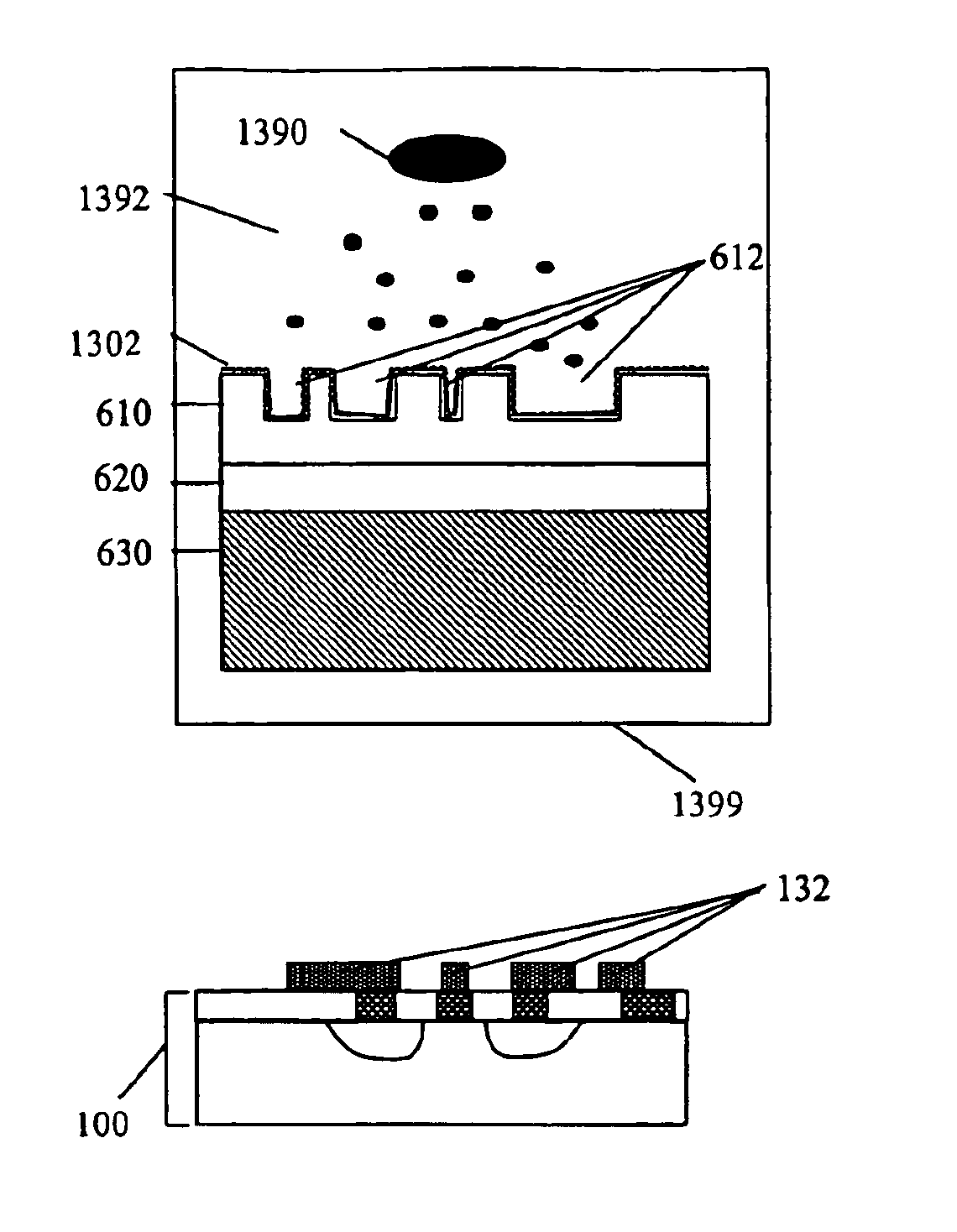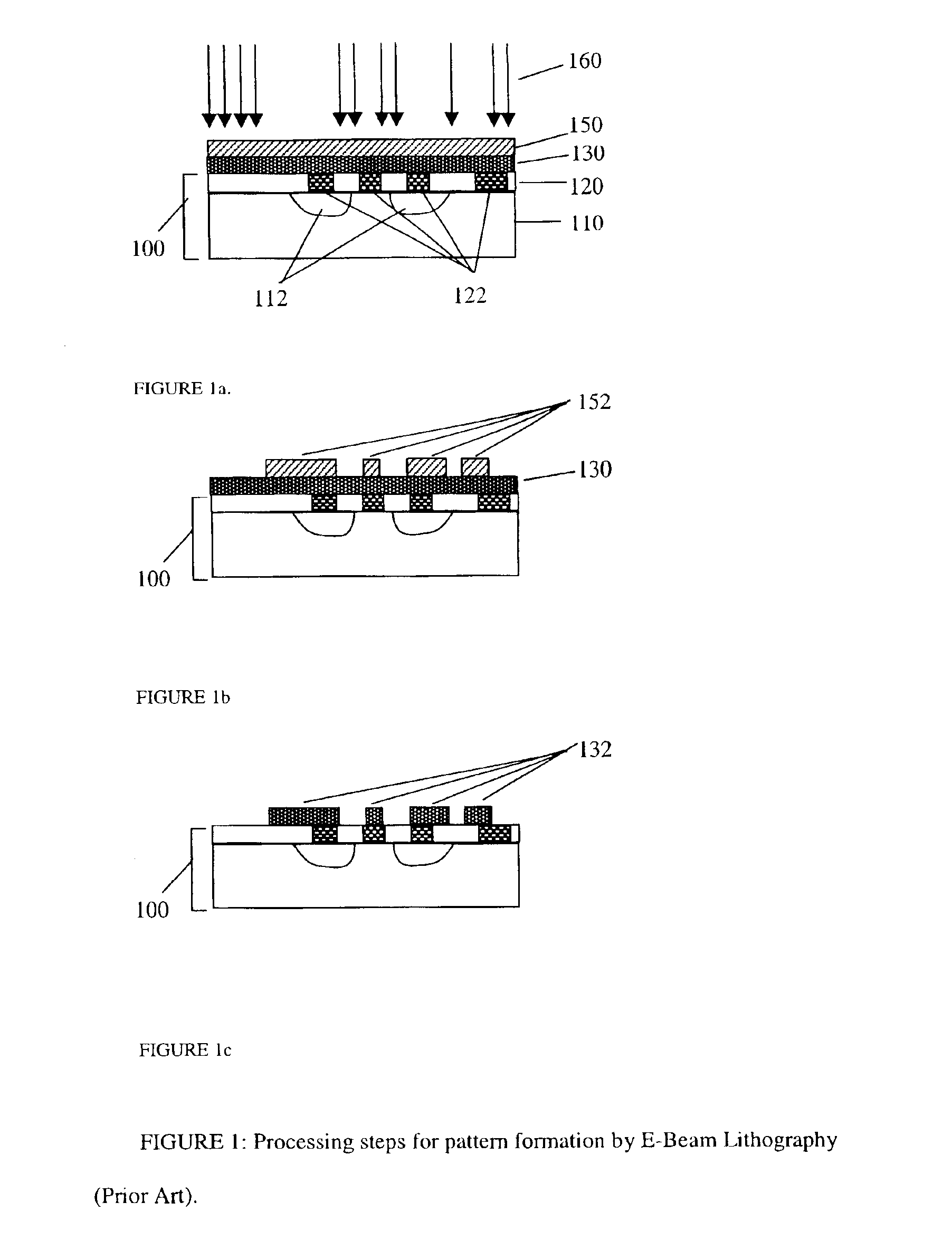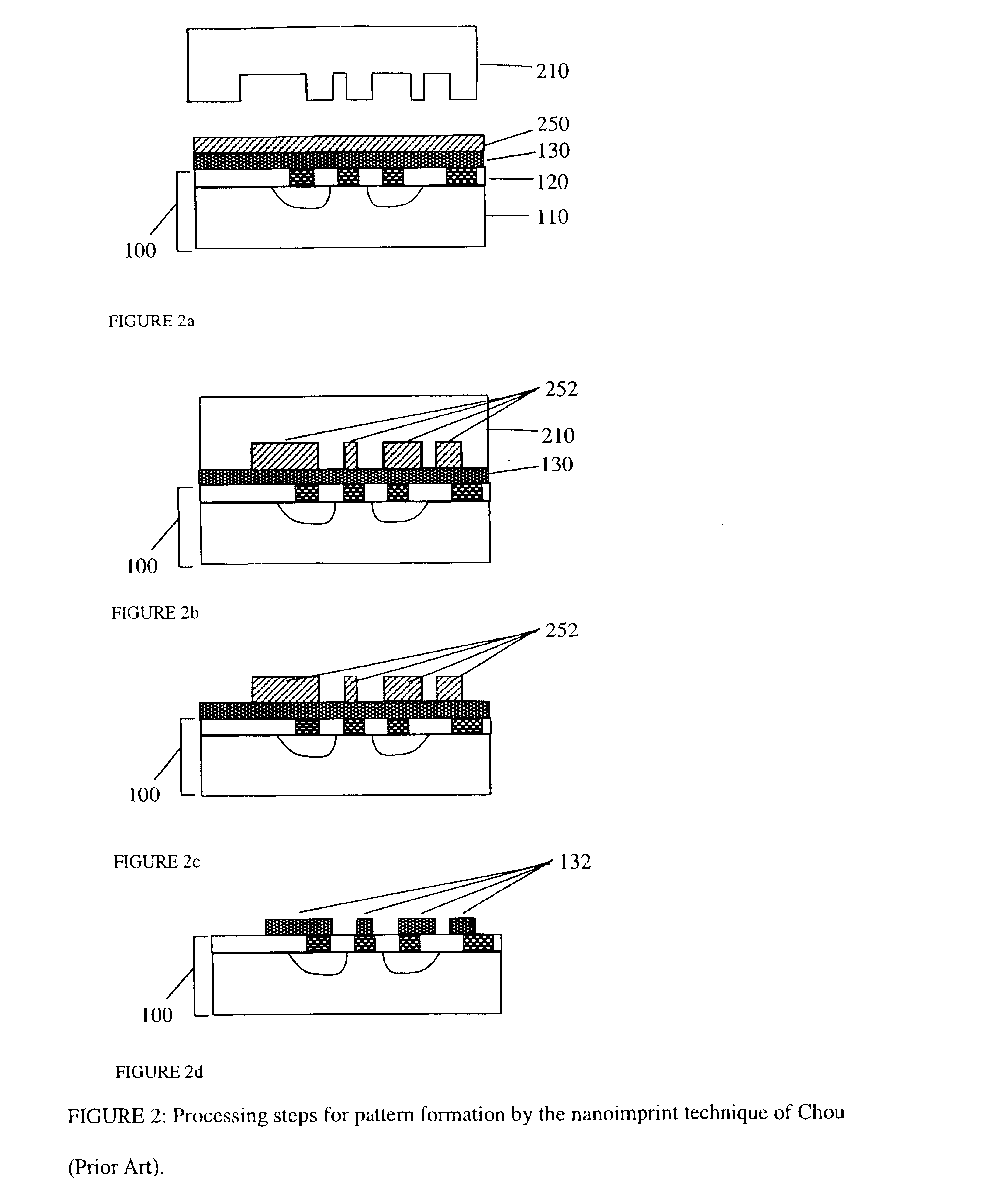Replication and transfer of microstructures and nanostructures
a microstructure and nanostructure technology, applied in the field of microstructure and nanostructure replication and transfer, can solve the problems of optical imaging techniques not having the same resolution as e-beam systems, the typical throughput of an e-beam machine is very slow, and the process is generally slow and impractical for large numbers of microstructures, etc., to facilitate the transfer of patterns
- Summary
- Abstract
- Description
- Claims
- Application Information
AI Technical Summary
Benefits of technology
Problems solved by technology
Method used
Image
Examples
Embodiment Construction
As indicated above, this represents a manufacturing technique for integrated devices using a dissolvable template that is low cost, and can be applied to nanoimprint techniques or to the pre-fabrication of portions of microdevices that are stored until their use is required. We now present a more detailed description of the best and preferred embodiments of the invention.
FIG. 5 shows a flowchart for a manufacturing process using this technique. Initially, as shown in FIG. 5a, step 500 creates a master pattern defining the layout of the structures to be fabricated. Step 510 represents the replication of the master in a template. Step 520 represents the transfer of the template to a carrier. In step 530, optional additional processing steps are carried out on the template. This is also the step where entire nanostructures or portions of other devices can be fabricated on the template. In step 540, the carrier and template, along with any structures fabricated on the template, are plac...
PUM
| Property | Measurement | Unit |
|---|---|---|
| width | aaaaa | aaaaa |
| sizes | aaaaa | aaaaa |
| thickness | aaaaa | aaaaa |
Abstract
Description
Claims
Application Information
 Login to View More
Login to View More - R&D
- Intellectual Property
- Life Sciences
- Materials
- Tech Scout
- Unparalleled Data Quality
- Higher Quality Content
- 60% Fewer Hallucinations
Browse by: Latest US Patents, China's latest patents, Technical Efficacy Thesaurus, Application Domain, Technology Topic, Popular Technical Reports.
© 2025 PatSnap. All rights reserved.Legal|Privacy policy|Modern Slavery Act Transparency Statement|Sitemap|About US| Contact US: help@patsnap.com



